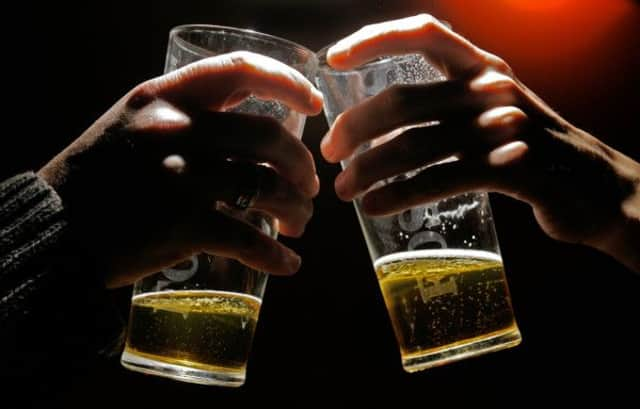Demonising social drinking is harmful


I am a sceptic and I believe that for research to mean anything at all, it has to be able to stand up to rigorous scrutiny – something that rarely, if ever, happens when it comes to statements regarding any problems that Scotland may have with alcohol.
Over the years, eye-watering amounts have been quoted as the cost of alcohol misuse to the Scottish economy. The figure quoted is £3.6 billion a year. At a conference in 2007 attended by alcohol professionals (and me), I asked where this figure came from – I didn’t dispute that it was true, only that not a shred of evidence had been produced to substantiate the figure.
Advertisement
Hide AdAdvertisement
Hide AdWhen you examine the numbers in the report from where the above figure comes (the Societal Cost of Alcohol Misuse in Scotland for 2007), the most common word that appears is “estimated”. This means, notwithstanding the above figure is trotted out as gospel, that it is almost entirely based on supposition. Another section is headed up as “presenteeism” – the problem of people turning up to work when they should be off sick, most likely because they are scared of losing their job if they don’t turn up. Some £185 million of the above total is covered by this and it relates inter alia to a survey conducted in 2004 which suggested workers turned up with a hangover an average of 2½ days a year and also factors in not only National Insurance and pension costs, but heating and lighting as well – come on!
In late December, Brian Monteith wrote in The Scotsman that, all things being equal, moderate drinkers live longer than non-drinkers.
However, he omitted to mention that came from a comprehensive academic study conducted on behalf of the American Heart Association in 2007. It showed that the relationship between light to moderate alcohol intake and cardiovascular mortality was J-shaped, with decreased risk starting at one drink a week. Even at more than two drinks a day, a decrease in cardiovascular mortality could be seen compared with non-drinkers. Of course, it must be emphasised that, over four drinks a day, the relative risk of total mortality starts to increase.
One thing missing in all of this is the positive effects that beer and pubs have in Scotland and the fact most of us who drink do so responsibly and cause no harm to anyone. Those who do most of their drinking in well-run community pubs, like me, fall into this category and are part of the solution to any problems Scotland may have with alcohol while those who get tanked up at home on cheap supermarket hooch before going out or who do all of their drinking at home are almost all of the problem.
Dr Nick Sheron, who runs the liver unit at Southampton General Hospital and is a co-founder of the UK Alcohol Health Alliance, said in a recent Panorama edition on problem drinking that most people referred to his unit mostly drank alone at home.
A recent report by Oxford Economics, for the British Beer and Pub Association, found that the sector sustained almost 50,000 direct jobs in Scotland and more than 70,000 when indirect and induced jobs are included – and adds some £1.5bn to the Scottish economy.
This includes all of the jobs created by the 70 new breweries that have opened since the early 1990s, almost all of which are owned and run from Scotland, unlike the multinational dominated whisky industry. Most pubs in this country are a force for good in society and cater for every occasion and all sectors of society – if you haven’t visited one recently why not ignore Dry January and do so. If you use Camra’s Good Beer Guide as your reference, you most likely won’t be disappointed.
• Colin Valentine is national chairman, Camra (Campaign for Real Ale) www.camra.org.uk
SEE ALSO